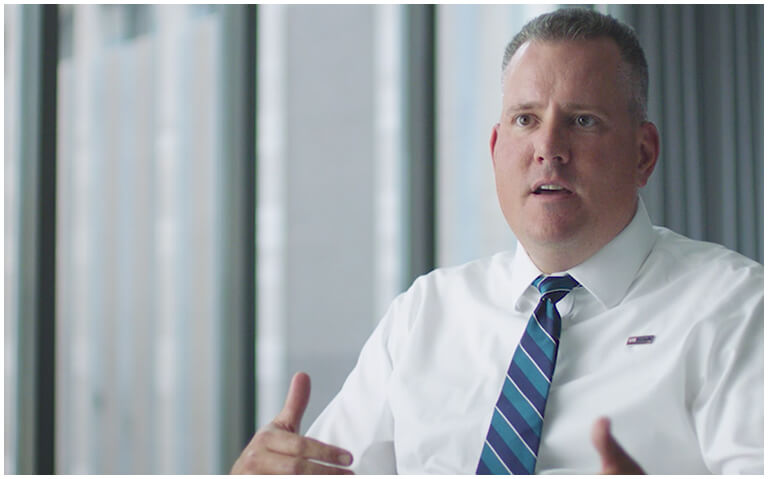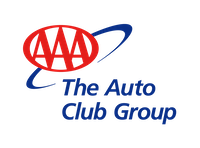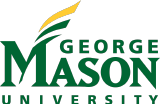U.S. Bank is a Trailblazer
Improving the customer experience is just another way that U.S. Bank puts people first.

2.35x
Lift in Lead Conversion
U.S. Bank puts the customer in the center with Salesforce.
U.S. Bank is actively positioning itself for the future. A key part of that strategic effort is adopting a “one bank” mindset to eliminate silos and create a unified customer experience across all business lines. That effort received an important boost from Salesforce.
In the past, customer relationships were built within individual business units, despite the fact that a customer might do business with multiple divisions such as banking, mortgage, investment or payments. By approaching customer relationships as a single company, with a single view of “the truth,” employees now have an aligned and complete view of their customers’ interactions with the company. This has been a game-changing shift for the nation’s fifth-largest commercial bank.
U.S. Bank is a Trailblazer by using a single, unified, and companywide platform.
With the help of the Salesforce Platform, the bank now can create a single, unified database of customer information, giving a more complete picture of each customer. In turn, customers now have an easier time accessing financial services across all channels, including mobile devices, personal computers, ATMs, and more than 3,000 branches in 25 states.
“There are tools and resources in place today that simply weren’t available a decade ago, and putting them to work for the good of our customers and the good of our organization overall, has been a tremendous strategic move for us,” said Srini Nallasivan, Chief Analytics Officer.
Explore the products that are helping U.S. Bank grow.
Sales
Service
Marketing
U.S. Bank is
a Trailblazer
Intelligent lead-management features led the way to Salesforce adoption.
The move to Salesforce started after the company’s Small Business Banking group began looking for a new vendor to support mobile applications. The old system relied on separate databases that each required individual updates and hardware that required constant upgrades. This meant data was siloed and could not intermingle, which prevented U.S. Bank from getting a complete picture of its customers. With Salesforce, all customer data collected from every branch lives in one system.
“Customers are at the center of everything we do,” said John Bilden, head of enterprise customer relationship management. “Having a unified view of our customers enables us to deliver a more unified customer experience.”
U.S. Bank drives revenue with an AI-first strategy that turns data into insights.
With a single, unified database of all its customer information, U.S. Bank has the data it needs to understand its customers, and, with Sales Cloud Einstein, it has the tools it needs to turn that information into results. For example, the bank was able to use Einstein to build a model to predict lead conversion by searching through customized historical lead data. By sharing the insights gleaned from Einstein, U.S. Bank employees can work more effectively across the company’s entire network. Wealth managers, for example, can use retail banking insights to offer relevant products to customers in the wealth division.
“We work to build high-quality, personalized relationships between our customers and their financial advisors or commercial bankers. There is nothing that replaces that person-to-person interaction,” Nallasivan said. “What AI allows us to do is augment that relationship. We can provide our teams with better data and smarter insights, which helps them establish stronger relationships.”
A unified approach forges stronger high-touch customer relationships.
The next step in U.S. Bank’s deployment of customer relationship management (CRM) is personalization. The bank is partnering with Salesforce to personalize its financial offerings and strengthen the complicated, high-touch relationships that involve a mix of banking services.
“Salesforce allows us to more effectively serve our customers in the moments that matter most,” Bilden said. “The Salesforce Platform gives our employees who are handling our relationships access to what they need to know, regardless of our internal division, so we’re one bank, one company to our customers.”
One example of this new approach is Salesforce’s “team room” concept, where up to 50 employees who work on a single customer account can see the information they need, when they need it.
Agility in one business area leaves an easy path for others to follow.
The company’s implementation of Salesforce created immediate benefits that were hard to ignore. The Small Business Banking group gained more agility and more flexibility to add or subtract built-in features, as well as a decreased need for technology assistance and new equipment.
The group’s increased productivity garnered attention from other areas of the bank, and in 2013, the home mortgage division adopted Salesforce, followed by wealth management and a payment services unit. Two years later, the commercial banking group signed on, as well. Today, about 12,000 of U.S. Bank’s employees are Salesforce users.
Trailhead training speeds up employee adoption of Salesforce.
Getting people to adopt Salesforce has been a major consideration for U.S. Bank, and the company points to Trailhead, Salesforce’s guided learning paths, as an important part of that initiative.
When introducing Salesforce within a U.S. Bank unit, the Enterprise CRM team found individual users were much quicker to adapt to the Customer 360 Platform once they completed the Trailhead paths.
This guided-learning approach has provided valuable education for the development team members, too, as it helped them easily find solutions to any concern they may have. Trailhead is now the most popular starting point for training on the Enterprise CRM team, and they’re expanding its use to reporting, seasonal updates, and new product education.


Trailblazer Spotlight
“Trailhead can help everybody at my company be a Trailblazer by cultivating a curiosity around our business challenges and how Salesforce can help.”
Salesforce Einstein points the way forward with artificial intelligence.
After eight years with Salesforce, and success with Sales Cloud Einstein, U.S. Bank was ready to see what else Salesforce Einstein had to offer. Despite requiring an AI solution customized to its unique needs, U.S. Bank nonetheless found there were many use cases for artificial intelligence. With myEinstein, U.S. Bank has the ability to predict anything in CRM — an ability that is powering many of its current projects. For one initiative, Einstein helps U.S. Bank solve a problem shared by all banking institutions: customer churn. The team uses Einstein Discovery to understand and explain the causes of churn and predict the likelihood of customer retention.
“The volume of information and quality of data that comes with AI and machine learning allows us to see patterns and make connections that the human eye cannot,” Nallasivan said. “That enhancement to our analytics capabilities is huge, and bringing it down to the frontline level is game changing. There is tremendous potential that we are just now beginning to fully realize.”
Salesforce is a mission-critical partner in U.S. Bank’s customer service strategy.
In December 2016, U.S. Bank signed a five-year agreement, cementing its relationship with Salesforce as a mission-critical partner.
“Salesforce enables relationships. People are at the center of the culture, and the tools they have created bring that culture to life for its customers,” Bilden said, “That mindset or approach is directly in line with our philosophy. It puts people first, and everything we do enables us to be in the best possible position to deliver our enterprise strategy and serve customers now and into a very exciting future.”
Keep exploring stories like this one.
Questions? We’ll put you on the right path.









